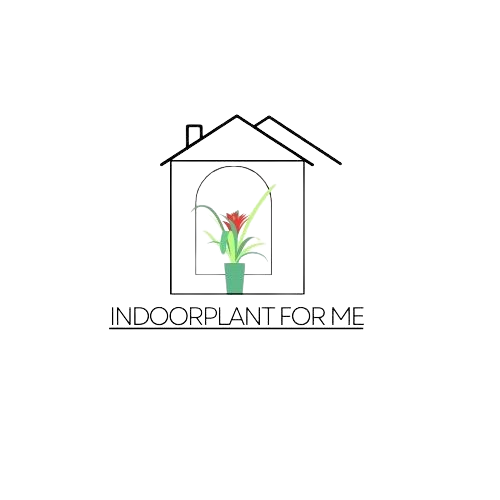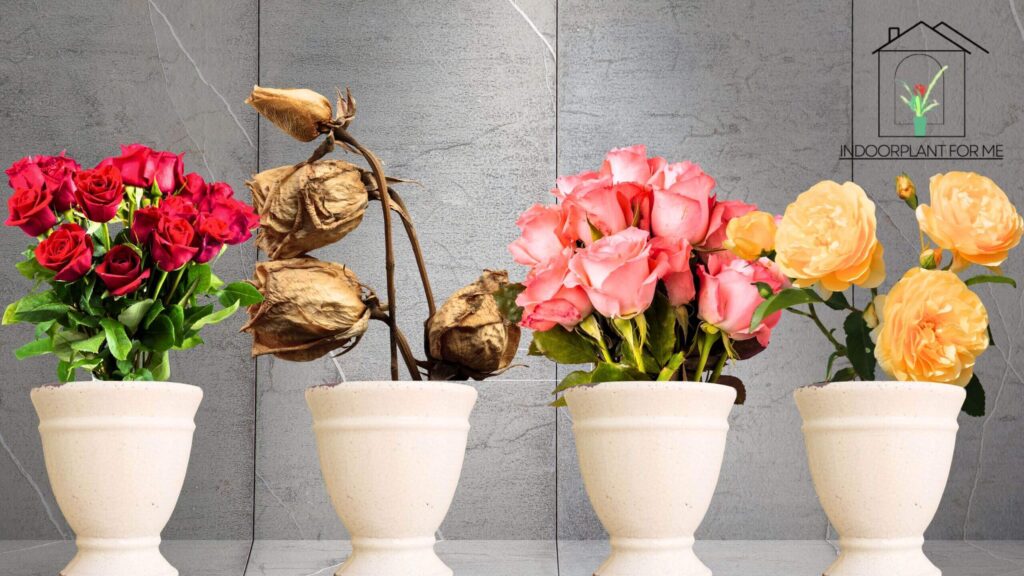Is Jade Plant a Succulent? Yes, the Jade is a Succulent Plant. The jade plant, with its thick, fleshy leaves and tree-like structure, is a beloved addition to many homes.
But is this trendy houseplant truly a succulent? The answer is a resounding yes!
Jade plants, scientifically known as Crassula ovata, belong to the Crassula genus, which is part of the larger succulent family.
In this comprehensive guide, we’ll dive deep into the world of jade plants, exploring their succulent nature, care requirements, and incredible benefits. Get ready to become a jade plant pro!
What is a Succulent Plant?
Before we delve into the specifics of jade plants, let’s first understand what qualifies a plant as a succulent. Succulent plants have evolved to store water in their leaves, stems, or roots, allowing them to thrive in arid or drought-prone environments.
These water-storing capabilities are what give succulents their signature thick, fleshy leaves or stems. Succulents come in various shapes, sizes, and colors, making them a popular choice for indoor and outdoor gardening.
Is Jade Plant a Succulent?
Now that we know the definition of a succulent, let’s address the million-dollar question: is a jade plant a succulent? Absolutely! it is a succulent plant.
The Jade plants exhibit all the characteristic traits of a succulent:
1. Thick, Fleshy Leaves: Jade plants have plump, oval-shaped leaves that store water, enabling them to survive periods of drought.
2. Drought Tolerance: Like other succulents, jade plants can go for extended periods without water, making them low-maintenance and perfect for forgetful plant owners.
3. Slow Growth: Succulents, including jade plants, grow slowly, conserving energy and resources for survival in harsh conditions.
Jade Plant Care Tips
As a succulent, jade plants have specific care requirements to ensure their health and longevity. Here are some essential tips for keeping your jade plant thriving:
Lighting
Jade plants love bright, direct sunlight. Place them near a south or west-facing window to provide ample light. However, be cautious of scorching direct sunlight during the hottest summer months.
Watering
One of the most common mistakes when caring for jade plants is overwatering.
As succulents, they prefer their soil to dry out completely between waterings. Water thoroughly, ensuring the excess moisture drains from the bottom of the pot, and then allow the soil to dry before watering again.
Soil and Potting
Jade plants thrive in well-draining soil mixes designed for cacti and succulents.
Ensure the pot has adequate drainage holes to prevent waterlogging, which can lead to root rot.
Temperature and Humidity
Jade plants prefer average room temperatures between 65°F and 75°F (18°C to 24°C). They can tolerate low humidity levels but may appreciate occasional misting during dry periods.
Pruning and Propagation
Regular pruning encourages bushier growth and maintains the jade plant’s desired shape. Pruned stem cuttings can be easily propagated to create new plants, making jade plants a great option for sharing with friends and family.
Benefits of Growing Jade Plants
Jade plants offer more than just their attractive, succulent foliage. Here are some fantastic benefits of having these hardy houseplants in your home or office:
1. Air Purification: Like many plants, jade plants help purify the air by absorbing harmful toxins and releasing oxygen.
2. Low Maintenance: With their drought tolerance and slow growth, jade plants require minimal care and attention, making them perfect for busy lifestyles.
3. Feng Shui: In the practice of Feng Shui, jade plants are believed to bring good luck, prosperity, and positive energy into a space.
4. Versatility: Jade plants can be grown as houseplants, in outdoor gardens (in suitable climates), or even as bonsai specimens.
Jade Plant Varieties to Explore
While the classic jade plant (Crassula ovata) is the most recognizable, the Crassula genus offers several other stunning varieties to explore. Here are a few favorites:
1. Gollum Jade (Crassula ovata ‘Gollum’)
This unique variety features tubular, green leaves that resemble tiny fingers or tentacles, giving it a whimsical, otherworldly appearance.
2. Hobbit Jade (Crassula ovata ‘Hobbit’)
As the name suggests, the Hobbit jade is a miniature version of the classic jade plant, making it perfect for small spaces or as a desktop companion.
3. Variegated Jade (Crassula ovata ‘Variegata’)
This eye-catching variety boasts green leaves with striking yellow or cream variegation, adding a pop of color to any space.
Container Ideas for Jade Plants
Jade plants make excellent candidates for creative container gardening. Here are some fun and unique ideas to showcase your jade plant:
| Container Type | Description |
| Hanging Baskets | Trailing jade varieties, like the ‘Gollum’ or ‘Hobbit’, look stunning in hanging baskets, creating a cascading succulent display. |
| Terrariums | Compact jade plants can thrive in closed terrariums, providing a miniature, self-contained ecosystem. |
| Repurposed Items | Get creative by planting jade plants in repurposed items like teacups, colanders, or even old shoes for a quirky touch. |
Where to Buy Jade Plants
Jade plants are widely available at nurseries, garden centers, and even big-box stores. However, consider purchasing from specialized succulent nurseries or online retailers for a wider selection of varieties and expert advice. Here are a few trusted sources:
– Mountain Crest Gardens
– Leaf & Clay
– Succulent Depot
Remember, when buying jade plants online, look for reputable sellers with positive customer reviews and a strong commitment to safe, secure shipping.
FAQs
How Often Should I Water My Jade Plant?
Jade plants should be watered thoroughly, allowing the soil to dry out completely between waterings.
During the growing season (spring and summer), water is used every 2-3 weeks, and during the dormant period (fall and winter), water is used once a month or less.
Why Are My Jade Plant’s Leaves Falling Off?
Various factors, including overwatering, underwatering, or sudden environmental changes can cause leaf drop in jade plants.
Ensure you’re providing the proper care, and the plant should recover.
Can Jade Plants Live Outdoors?
Yes, jade plants can be grown outdoors in USDA Hardiness Zones 9-11, where temperatures remain above freezing.
In colder climates, they should be kept as indoor houseplants.
How Big Do Jade Plants Get?
Jade plants can grow quite large, reaching up to 3-4 feet tall and wide when given ample space and time. However, regular pruning can keep them at a more manageable size for indoor growing.
Do Jade Plants Need Direct Sunlight?
Jade plants thrive best when exposed to direct sunlight for at least a few hours each day. While they can tolerate partial shade, they won’t grow as vigorously or develop their signature compact, tree-like shape.
If your jade plant doesn’t receive enough sunlight, it may become leggy and stretched out as it tries to reach for the nearest light source.
To ensure your jade plant gets adequate sunlight, place it near a south or west-facing window where it can bask in the sun’s rays.
If you live in a particularly hot climate, you may want to filter the intense afternoon sun to prevent leaf scorching. Rotate the plant periodically to encourage even growth on all sides.
Do Jade Plants Need Succulent Soil?
Absolutely! As a succulent species, jade plants have specific soil requirements to support their water-storing capabilities and prevent root rot.
Regular potting soil can retain too much moisture, leading to potential issues like root rot or fungal growth.
Instead, use a well-draining succulent or cactus soil mix specifically formulated for these types of plants.
These mixes typically contain ingredients like perlite, sand, or small gravel to improve drainage and aeration.
You can also create your succulent soil blend by mixing potting soil with additional gritty materials like perlite or pumice.
What Is Jade Plant Good For?
Beyond their attractive appearance and easy care, jade plants offer several practical benefits.
First and foremost, they are excellent natural air purifiers, helping to remove harmful toxins and pollutants from indoor environments.
Jade plants are also believed to bring good luck and prosperity according to the principles of Feng Shui.
Their symbolism of growth, renewal, and longevity makes them popular housewarming or office gifts.
Additionally, jade plants can be propagated easily from stem or leaf cuttings, allowing you to share these low-maintenance beauties with friends and family or grow new plants for yourself.
What Makes Jade Plants Grow Faster?
While jade plants are known for their slow, deliberate growth, there are a few factors that can encourage faster development.
Providing ample sunlight is crucial, as jade plants exposed to bright, direct light will grow more rapidly than those in shaded conditions.
Proper watering is also key. Allow the soil to dry out completely between waterings, then thoroughly soak the plant until water drains from the bottom of the pot.
This cycle of drought and quenching mimics the jade plant’s natural growing conditions and stimulates growth.
Finally, consider fertilizing your jade plant during the active growing season (spring and summer) with a balanced, water-soluble fertilizer diluted to half strength.
This extra boost of nutrients can support lush, vigorous growth without overwhelming the plant.
How to Treat Botrytis Blight on Roses: A Comprehensive Guide
Roses are undoubtedly one of the most beautiful and beloved flowers in any garden. With…
Should I Cut Brown Spots Off Fiddle Leaf Fig: A Complete Guide to Pruning Your Precious Plant
Yes, you can cut brown spots off a fiddle leaf fig, using the complete guide…
Can You Drown Mealybugs? Effective Strategies for Pest Control
Yes, you can drown mealybugs. It is one of the Effective Strategies for Pest Control. The…
How Fast Do Jade Plants Grow? A Comprehensive Guide
Would you like to know how fast do jade plants grow? Generally, young jade plants…
Exploring the Predatory Habits of Jumping Spiders: Do They Feast on Spider Mites?
Does the idea of exploring the predatory habits of jumping spiders interest you? Do you…
Do Jade Plants Need Sun
Asking the question; Do Jade Plants Need Sun? Yes, jade plants thrive in plenty of…
Conclusion
Jade plants are indeed succulents, and their remarkable ability to thrive with minimal care makes them a fantastic choice for plant enthusiasts of all levels.
Whether you’re a seasoned green thumb or a budding gardener, incorporating these hardy houseplants into your home or office is sure to bring joy and a touch of nature to your surroundings.
Embrace the succulent lifestyle with jade plants, and enjoy their captivating foliage, air-purifying properties, and low-maintenance charm for years to come.
Happy planting.










